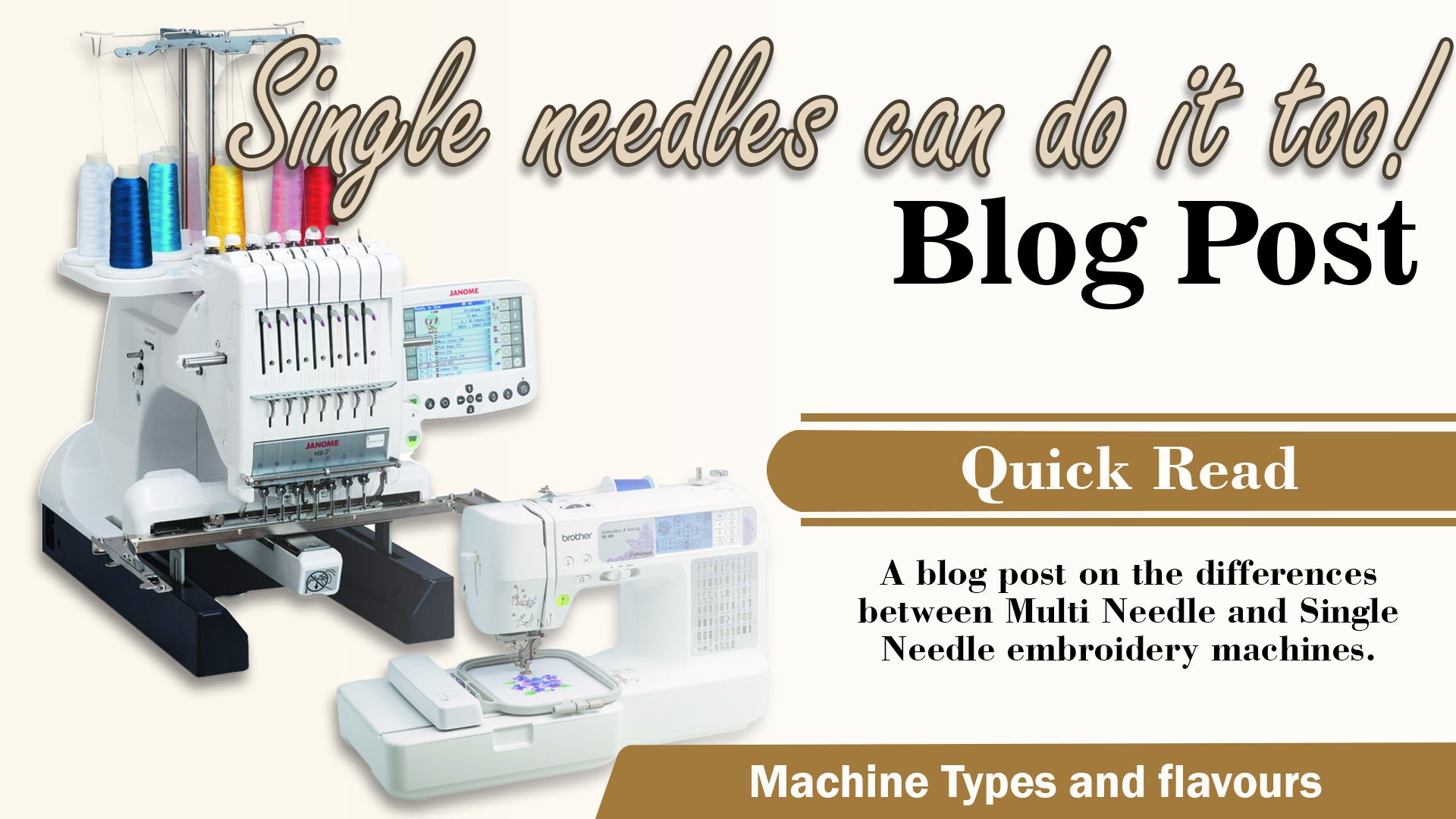Embroidery Enthusiast?
Don't Worry, Your Single Needle Can Do It Too!
So, you've seen the perfect design online, but it's been stitched with a multi-needle machine. You might think that this design won't work on your single-needle machine?
You'll be surprised to know that designs stitched on a multi-needle can be done on your single-needle too! Yep, simply put: if the design fits in your hoop, then you can stitch it! Let's dive into what makes a multi-needle embroidery machine so special and why your single-needle machine can still get the job done.
The Magic of Multi-Needle Machines
Multi-needle embroidery machines are the powerhouses of the embroidery world. These machines come equipped with several needles, typically ranging from four to ten, each loaded with a different color thread. This setup allows for seamless and automatic color changes during stitching, eliminating the need for manual thread changes that single-needle machines require.
One of the standout features of multi-needle machines is their large hoop sizes. These expansive hoops allow you to complete entire projects in one go, whereas a single-needle machine with a smaller hoop might require multiple hoopings and, in some cases, a bit of extra sewing to align everything perfectly.
Another advantage is speed. Multi-needle machines can stitch at speeds of around 1200 stitches per minute (spm), significantly faster than most single-needle machines. This speed, combined with the ability to pre-program the thread colors, means you can set up your project and let the machine handle the rest, switching needles and colors as needed.
Making It Work on a Single Needle
While multi-needle machines are undoubtedly efficient and versatile, your single-needle machine is far from obsolete. Single-needle machines are often more affordable and simpler to operate, making them an excellent choice for hobbyists and those new to embroidery.
To tackle designs intended for multi-needle machines, you'll need to manually change threads each time the color changes. This might sound tedious, but it's entirely manageable with a bit of patience and practice. Additionally, with smaller hoops, you'll need to rehoop your fabric to cover larger designs. This requires careful alignment, but with some experience, it becomes second nature.
Ultimately, the key to successful embroidery on a single-needle machine lies in preparation and organization. Plan your thread changes in advance, and take your time to ensure precise rehooping. While it might take a bit longer, the satisfaction of completing a complex design on your single-needle machine is immensely rewarding.
In Conclusion
While multi-needle embroidery machines offer incredible convenience and efficiency, single-needle machines are perfectly capable of producing stunning designs with a bit of extra effort. Whether you're working with a single-needle or multi-needle machine, the joy of embroidery lies in the creativity and craftsmanship you bring to each project. So, don't be discouraged by the differences in machinery; embrace the process and enjoy the art of embroidery in all its forms!









